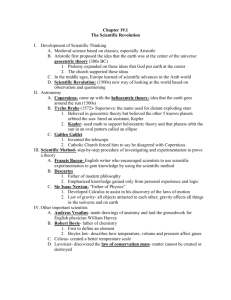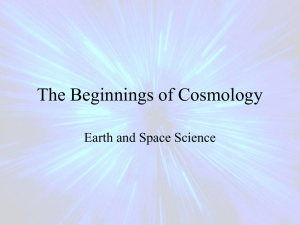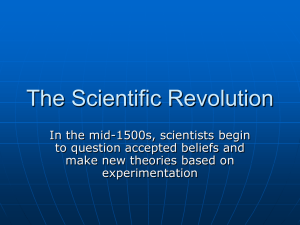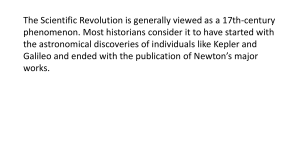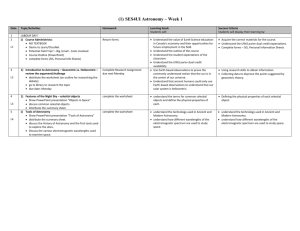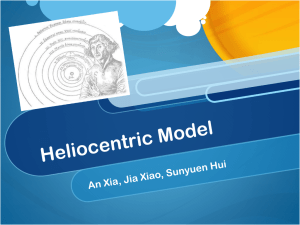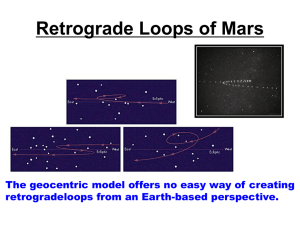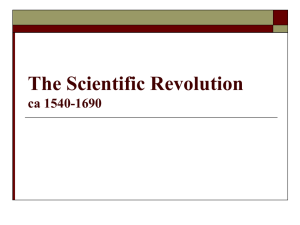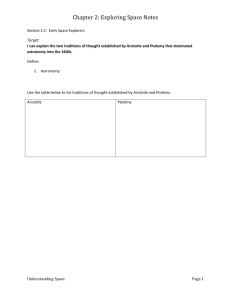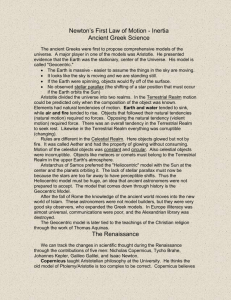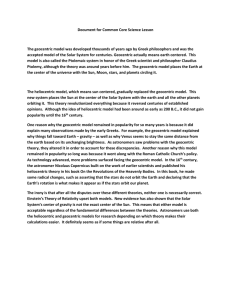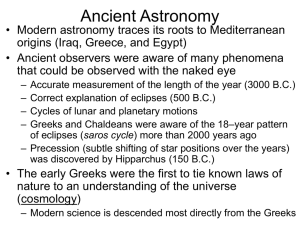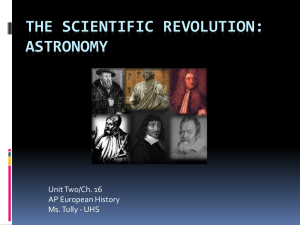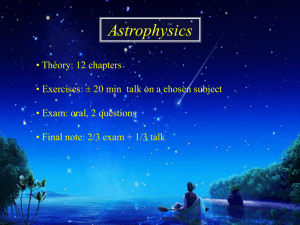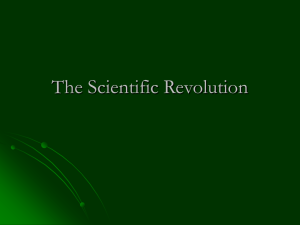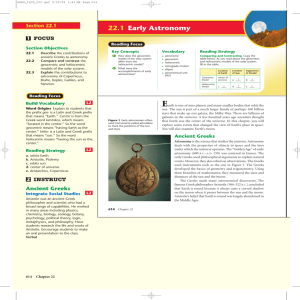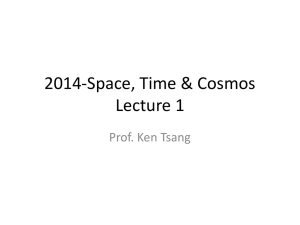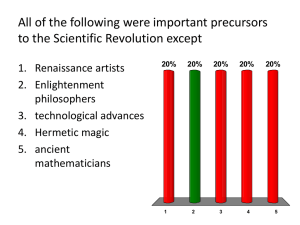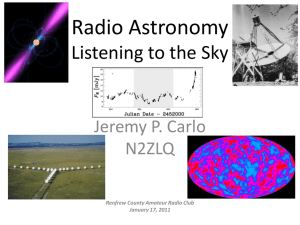The History of Astronomy
advertisement
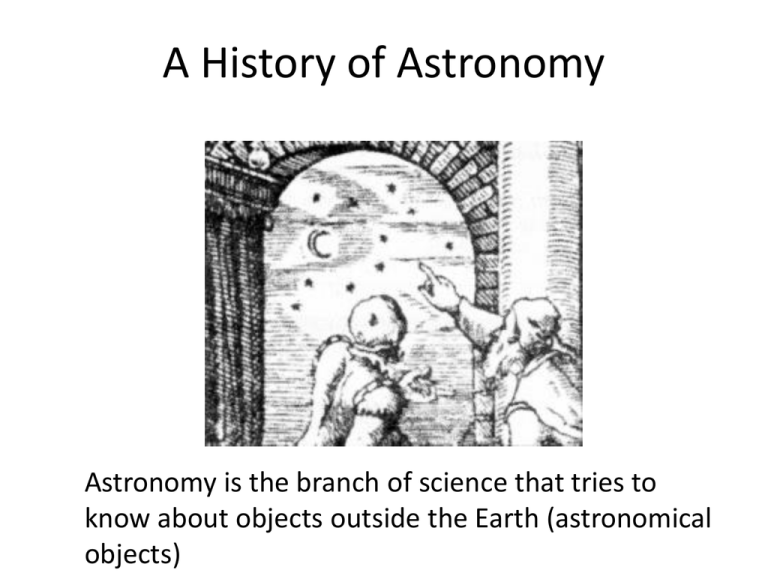
A History of Astronomy Astronomy is the branch of science that tries to know about objects outside the Earth (astronomical objects) Ancient Astronomy • “Ancient” means from time long past, especially before the end of the Western Roman Empire in 476 A.D. • Many ancient peoples, including in ancient China and India, made detailed observations about the objects in the sky • These observations were useful in making calendars, which helped in yearly planning, and were also part of many religions Is the solar system geocentric or heliocentric? • “geo” = earth, “helio” = sun, “centric” = centered, so “geocentric” means “earthcentered” and “heliocentric” means “suncentered” • Most ancient Greek astronomers believed that the earth was the center of the solar system and the universe, with everything orbiting it, which is called a “geocentric” model or system • We now know that the earth orbits the sun, which is called a “heliocentric” model Ancient Greek Astronomy • Most ancient Greeks believed that all astronomical objects were perfect, unchanging spheres and orbited in perfect circles around the earth, following different physical laws from those on Earth • These ideas were believed by most people until Copernicus, Kepler, and Galileo disproved them more than 1000 years later • Although they had many wrong ideas about the solar system, the ancient Greeks made many important astronomical discoveries Astronomy in the Middle Ages • In European history, the Middle Ages lasted from about 500 A.D. to about 1500 A.D. (between antiquity and the modern period) • In Europe, astronomy (and knowledge in general) did not gain much during the Middle Ages, and so it has been called “The Dark Ages” This picture shows the earth at the center and the sun and other planets orbiting the earth in perfect circles. This was the model believed to be true by most people during the Middle Ages Nicholas Copernicus (1473 - 1543) • The publication of Copernicus' book, On the Revolutions of the Celestial Spheres, just before his death in 1543, is considered a major event in the history of science • It argued for the heliocentric model based on the observed backward motion of Mars In this animation, the Sun is yellow, the Earth is blue, and Mars is red Heliocentric model Geocentric model Tycho Brahe (1546 - 1601) • His model of the Solar System put forth in Introduction to the New Astronomy (1588) combined the geocentric and heliocentric models In the Tychonic system, the objects on blue orbits (the Moon and the Sun) revolve around the Earth. The objects on orange orbits (Mercury, Venus, Mars, Jupiter, and Saturn) revolve around the Sun. Around all is a sphere of fixed stars. Johannes Kepler (1571 - 1630) • Published Astronomia nova in 1609 • Kepler’s work provided one of the foundations for Isaac Newton's theory of universal gravitation • He discovered that orbits are shaped like ellipses, not circles The same blue area is swept out in a given time. The green arrow is velocity. The purple arrow directed towards the Sun is the acceleration. The other two purple arrows are acceleration components parallel and perpendicular to the velocity. Galileo Galilei (1564 - 1642) • He discovered the four largest moons of Jupiter and craters on the Moon • His 1631 book, Dialogue Concerning the Two Chief World Systems, argued for the heliocentric model • He said the Earth could be moving because of the law of inertia One of Galileo’s drawings of the Moon, showing craters A drawing of Galileo Isaac Newton (1642 - 1727) • Newton used the ideas of Copernicus, Galileo, and others and created the 3 Laws of Motion and the Law of Universal Gravitation • These laws accurately described the motions of all objects everywhere, including astronomical objects • Before this it was believed that astronomical objects had different laws of motion than objects on the Earth • Published his theories in his work Principia in 1687
